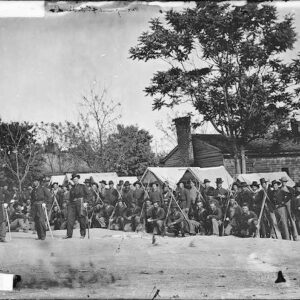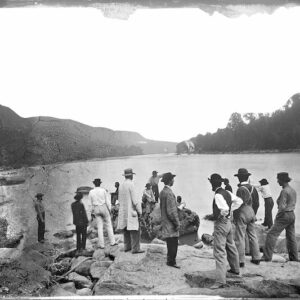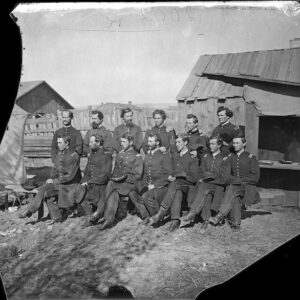Tag: Tennessee
Wikipedia says: Tennessee, officially the State of Tennessee, is a state in the Southeastern region of the United States. Tennessee is the 36th largest by area and the 16th most populous of the 50 states. It is bordered by Kentucky to the north, Virginia to the northeast, North Carolina to the east, Georgia, Alabama, and Mississippi to the south, Arkansas to the southwest, and Missouri to the northwest. Tennessee is geographically, culturally, and legally divided into three Grand Divisions of East, Middle, and West Tennessee. Nashville is the state’s capital and largest city, and anchors its largest metropolitan area.
Tennessee is rooted in the Watauga Association, a 1772 frontier pact generally regarded as the first constitutional government west of the Appalachian Mountains. Its name is derived from “Tanasi”, a Cherokee town in the eastern part of the state that existed before the first European American settlement. Tennessee was initially part of North Carolina, and later the Southwest Territory, before its admission to the Union as the 16th state on June 1, 1796. It earned the nickname “The Volunteer State” early in its history due to a strong tradition of military service. A slave state until the American Civil War, Tennessee was politically divided, with its western and middle parts supporting the Confederacy and the eastern region harboring pro-Union sentiment. As a result, Tennessee was the last state to secede and the first readmitted to the Union after the war.
Tennessee has diverse terrain and landforms, and from east to west, contains a mix of cultural features characteristic of Appalachia, the Upland South, and the Deep South. The Blue Ridge Mountains along the eastern border reach some of the highest elevations in eastern North America, and the Cumberland Plateau contains many scenic valleys and waterfalls. The central part of the state is marked by cavernous bedrock and irregular rolling hills, and level, fertile plains define West Tennessee. The state is twice bisected by the Tennessee River, and the Mississippi River forms its western border.
Civil War
At the onset of the American Civil War, most Middle and West Tennesseans favored secession in order to preserve their slavery-based economies, while in East Tennessee, most favored remaining in the Union. In 1860, slaves composed about 25% of the population of Tennessee, the lowest share of the states that joined the Confederacy. Tennessee provided more Union troops than any other Confederate state, and the second-highest number of Confederate troops, behind Virginia. Due to its central location, Tennessee was a crucial state during the war and saw more military engagements than any other state except Virginia.
After Abraham Lincoln was elected president in 1860, secessionists in the state government led by Governor Isham Harris sought voter approval to sever ties with the United States, which was rejected in a referendum by a 54–46% margin in February 1861. After the Confederate attack on Fort Sumter in April and Lincoln’s call for troops in response, the legislature ratified an agreement to enter a military league with the Confederacy on May 7, 1861. On June 8, with Middle Tennesseans having significantly changed their position, voters approved a second referendum on secession by a 69–31% margin, becoming the last state to secede. In response, East Tennessee Unionists organized a convention in Knoxville with the goal of splitting the region to form a new state loyal to the Union. In the fall of 1861, Unionist guerrillas in East Tennessee burned bridges and attacked Confederate sympathizers, leading the Confederacy to invoke martial law in parts of the region. In March 1862, Lincoln appointed native Tennessean and War Democrat Andrew Johnson as military governor of the state.
General Ulysses S. Grant and the U.S. Navy captured the Tennessee and Cumberland rivers in February 1862 at the battles of Fort Henry and Fort Donelson. Grant then proceeded south to Pittsburg Landing and held off a Confederate counterattack at Shiloh in April in what was at the time the bloodiest battle of the war. Memphis fell to the Union in June after a naval battle on the Mississippi River. Union strength in Middle Tennessee was tested in a series of Confederate offensives beginning in the summer of 1862, which culminated in General William Rosecrans’s Army of the Cumberland routing General Braxton Bragg’s Army of Tennessee at Stones River, another one of the war’s costliest engagements. The next summer, Rosecrans’s Tullahoma campaign forced Bragg’s remaining troops in Middle Tennessee to retreat to Chattanooga with little fighting.
During the Chattanooga campaign, Confederates attempted to besiege the Army of the Cumberland into surrendering, but reinforcements from the Army of the Tennessee under the command of Grant, William Tecumseh Sherman, and Joseph Hooker arrived. The Confederates were driven from the city at the battles of Lookout Mountain and Missionary Ridge in November 1863. Despite Unionist sentiment in East Tennessee, Confederates held the area for most of the war. A few days after the fall of Chattanooga, Confederates led by James Longstreet unsuccessfully campaigned to take control of Knoxville by attacking Union General Ambrose Burnside’s Fort Sanders. The capture of Chattanooga allowed Sherman to launch the Atlanta campaign from the city in May 1864. The last major battles in the state came when Army of Tennessee regiments under John Bell Hood invaded Middle Tennessee in the fall of 1864 in an effort to draw Sherman back. They were checked by John Schofield at Franklin in November and completely dispersed by George Thomas at Nashville in December. On April 27, 1865, the worst maritime disaster in American history occurred when the Sultana steamboat, which was transporting freed Union prisoners, exploded in the Mississippi River north of Memphis, killing 1,168 people.
When the Emancipation Proclamation was announced, Tennessee was largely held by Union forces and thus not among the states enumerated in the proclamation, so it freed no slaves in the state. Andrew Johnson declared all slaves in Tennessee free on October 24, 1864. On February 22, 1865, the legislature approved an amendment to the state constitution prohibiting slavery, which was approved by voters the following month, making Tennessee the only Southern state to abolish slavery. Tennessee ratified the Thirteenth Amendment, which outlawed slavery in every state, on April 7, 1865, and the Fourteenth Amendment, which granted citizenship and equal protection under the law to former slaves, on July 18, 1866. Johnson became vice president when Lincoln was reelected, and president after Lincoln’s assassination in May 1865. Tennessee became the first Confederate state to have its elected members readmitted to Congress on July 24, 1866.
Showing 1–16 of 345 results
-

Image ID: AAPR
$0.99 -

Image ID: AAPX
$4.99 – $5.99 This product has multiple variants. The options may be chosen on the product page -

Image ID: AAQM
$3.99 -

Image ID: ACOI
$2.99 – $5.99 This product has multiple variants. The options may be chosen on the product page -

Image ID: ACUE
$4.99 -

Image ID: ACWF
$3.99 -

Image ID: ACXG
$3.99 -

Image ID: ACXI
$3.99 -

Image ID: ACXJ
$3.99 -

Image ID: ACXM
$4.99 -

Image ID: ACXN
$4.99 -

Image ID: ACXO
$4.99 -

Image ID: ACXU
$4.99 -

Image ID: ACXV
$4.99 -

Image ID: ACXX
$4.99 -

Image ID: ACXZ
$4.99